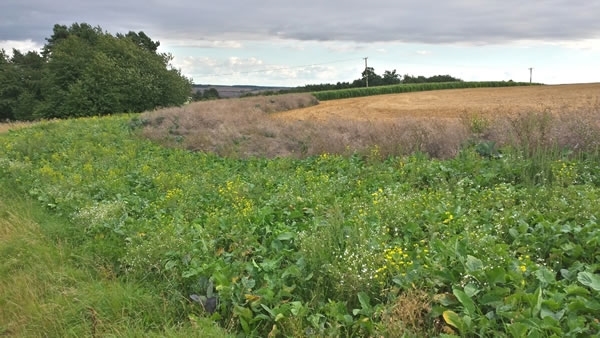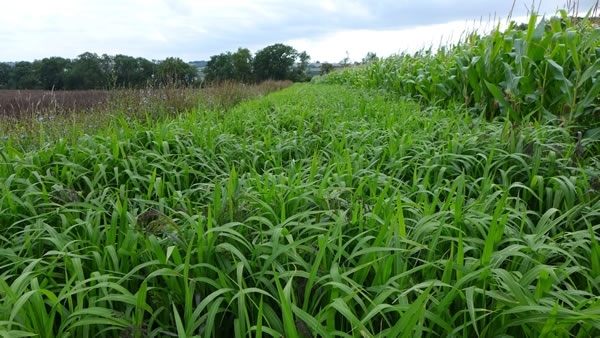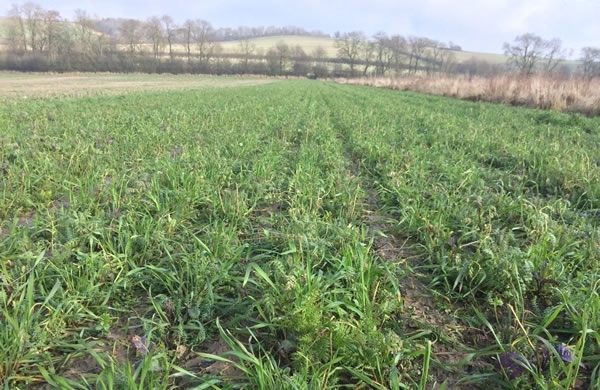By Richard Barnes, Kings Crops
The key plot preparation and establishment window for wild bird seed mixtures and game cover crops is approaching at the Allerton Project. As we look forward to what this season brings, it’s a good time to reflect on how the farm became what it is today and highlight the important work undertaken there.

Kings is a long standing partner and supporter of the GWCT and its valuable work in demonstrating best practice to policy makers and industry stakeholders. We’re currently involved in projects including the Scottish Grey Partridge Recovery Project at Balgonie, Perthshire and Auchnerran Demonstration Farm in Aberdeenshire, but a specific focus for us over the last five years has been the Allerton Project, Leicestershire.
A driven shoot, Higher Level Stewardship (HLS) agreement, a team of GWCT scientists and thousands of visitors all expect the very best from the project. Kings supports the provision of a wide range of habitat for game and farmland wildlife conservation and the gauntlet continues to be laid down for us to help deliver innovative yet effective crops and management techniques at the site.
The Kings team has approached the challenges and needs of the farm as if it were a conventional farm or estate. Winter hardy cover to support driven game shooting until 2nd February is a must, as well as meeting stewardship scheme requirements and addressing constant challenges from pests and weeds.
First steps
The first task was to include a strip of perennial crop in every cover area. Poacher Leave-it, a mix of reed canary grass, chicory, kale, phacelia, sweet clover, lucerne and Utopia, was planted in three metre wide strips on each headland edge. The crop has delivered multiple benefits, including year round habitat, a reduced area to plant each year and a great windbreak that helps to warm the holding and driving crops contained within.

The farm’s HLS agreement requires 35 acres of enhanced wild bird seed mix, so the next step was to identify a mix to fulfil this and deliver for the shoot too. The solution was Campaign Mix South, a blend of barley, wheat, triticale, linseed, red, white and reed millet and dwarf sorghum. This provided a valuable weed control opportunity and a critical ‘break’ crop from the brassica based Loddington Kale Mix, which includes Coleor, Goldeneye and 1000 head kales, fodder radish, Gold of Pleasure, linseed, Utopia and brown and white mustard. This mix is designed to tolerate a combination of pre and post-emergent herbicide applications and delivers valuable feed and cover, especially on the more exposed hill top plots.
To support the demonstration element of the project, a few strips of Poacher Maize with Synergy treatment are rotated through the cover areas to show visitors the vast benefits to game and farmland birds when this popular game crop is planted alongside wild bird seed mixtures.
Pollinator habitat
Releasing game helps to support a wild population and while many shoots focus on winter cover, the Allerton Project team considers how pollinator habitat can benefit all farmland wildlife. This has been successfully supported by the following features.
Nectar flower
A network of dedicated grass free pollen and nectar mix plots has been grown to support pollinator species and meet HLS agreement needs. These strips supply valuable cover and insects for game through spring and summer too.
Flower rich margins
Narrow species rich grass and wild flower mix strips help to build the habitat ‘connectivity’, supporting young farmland and game broods from late May to early July, when insects are the only way to survive for the first 10 days of life. These again meet an HLS option and look tremendous for visitors through the summer. We’ve also used our Sanctuary Mix for areas that need a more robust overhead canopy.
Autumn brood rearing cover

The heavy clay soils at Loddington can be tricky at times, but they’re great for sowing brood rearing cover in September. Our enhanced autumn sown wild bird seed mixture requires surprisingly little management, is a great way to avoid spring weeds and really delivers the goods for game and farmland bird broods.
Positive outcomes
In 2016, the Allerton Project achieved a 93% increase in songbird abundance when compared with the baseline count when the project began in 1992. The driven shoot is performing consistently well, delivering 8 shoot days with an average bag size of 120 head. Add to this the increasing visitor numbers throughout the year and it’s clear that the partnership is delivering for everyone involved.
To learn more about the Allerton Project or how Kings delivers habitats that work for the farm, shoot and stewardship scheme, please contact us on 0800 587 9797 or kingscrops@frontierag.co.uk. For a free copy of our latest catalogue which includes many of the crops grown at the Allerton Project, please click here.
Promote your business with the GWCT
A GWCT Trade Membership entitles you to a FREE guest blog spot which will be promoted directly to over 24,000 GWCT members and non-members alike.
GWCT Trade Membership benefits >